#medieval cities
Explore tagged Tumblr posts
Note
Please tell me more about neighbourhood PMCs in renaissance Italy
It would be my pleasure! (My research into this owes a lot to the excellent Power and Imagination: City-States in Renaissance Italy by Lauro Martines.)
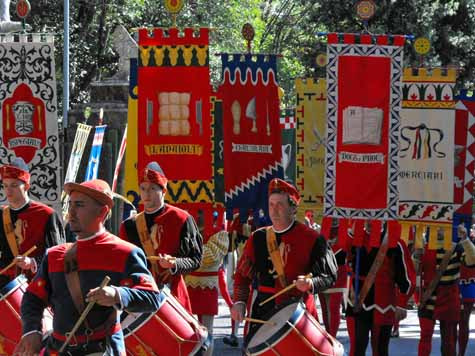
The first thing to note that, unlike the condottieri, these were not private military companies. Rather, the neighborhood military companies (in the sense of a military unit, rather than a profit-making entity) were self-defense organizations formed as part of a centuries-long political struggle for control over the urban commune between the signorile (the urban chivalry)/nobilita (the urban nobility) and the populo (the guilded middle class, who claimed to speak on behalf of "the people").
This conflict followed much the same logic that had given rise to the medieval commune in the first place. Legally, the communes had started as mutual defense pacts between the signorile and the cives (the free citizens of the city) against the rural feudal nobility, which had given these groups the military and political muscle to push out the marquises and viscounts and barons and claim exclusive authority over the tax system, the judicial system, and the military.
So it made sense that, once they had vanquished their enemies and established the commune as the sovereign, both sides would use the same tactic in their struggle over which of them would rule the commune that ruled the city. The signorile and nobilita formed themselves into consorteria or "tower societies," by which ancient families allied with one another (complete with dynastic marriage alliances!) to build and garrison the towers with the knights, squires, men-at-arms, and bravi of their households. These phallic castle substitutes were incredibly formidable within the context of urban warfare, as relatively small numbers of men with crossbows could rain down hell on besiegers from the upper windows and bridges between towers, even as the poor bastards on the ground tried to force the heavy doors down below.
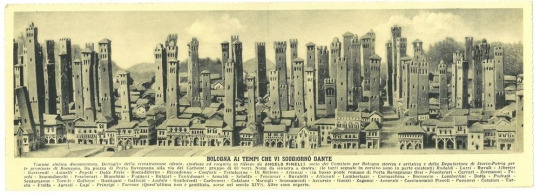
To combat noble domination of communal government, achieve direct representation on the political councils, establish equity of taxation and regulate interest rates, and enforce legal equality between nobility and citizenry, the populo formed themselves into guilds to build alliances between merchants and artisans in the same industries. However, these amateur soldiers struggled to fight on even footing with fully-trained and well-equipped professional soldiers, and the guild militias were frequently defeated.
To solve their military dilemma, the populo engaged in political coalition-building with the oldest units of the urban commune: the neighborhoods. When the cities of medieval Italy were originally founded, they had been rather decentralized transplantations of the rural villages, where before people had any conception of a city-wide collective their primary allegiance was to their neighborhood. As can still be seen in the Palio di Siena to this day, these contrade built a strong identity based on local street gangs, the parish church, their traditional heraldry, and their traditional rivalries with the stronzi in the next contrade over. And whether they were maggiori, minori, or unguilded laborers, everyone in the city was a member of their contrade.
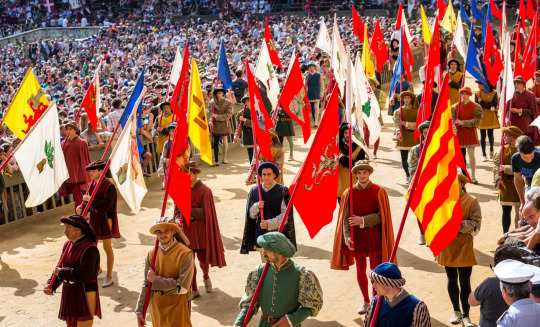
As Martines describes, the populo both recruited from (and borrowed the traditions of) the contrade to form their armed neighborhood companies into a force that would have the manpower, the discipline, and the morale to take on the consorteria:
"Every company had its distinctive banner and every house in the city was administratively under the sign of a company. A dragon, a whip, a serpent, a bull, a bounding horse, a lion, a ladder: these, in different colors and on contrasting fields, were some of the leitmotifs of the twenty different banners. They were emblazoned on individual shields and helmets. Rigorous regulations required guildsmen to keep their arms near at hand, above all in troubled times. The call to arms for the twenty companies was the ringing of a special bell, posted near the main public square. A standard-bearer, flanked by four lieutenants, was in command of each company."
To knit these companies organized by neighborhood into a single cohesive force, the lawyers' guilds within the populo created a state within a state, complete with written constitutions, guild charters, legal codes, legislative and executive councils. Under these constitutions, the populo's councils would elect a capitano del popolo, a professional soldier from outside the city who would serve as a politically-neutral commander, with a direct chain of command over the gonfaloniere and lieutenants of the neighborhood companies, to lead the populo against their noble would-be overlords.
And in commune after commune, the neighborhood companies made war against the consorteria, taking the towers one by one and turning them into fortresses of the populo. The victorious guilds turned their newly-won military might into political hegemony over the commune, stripping the nobilita of their power and privilege and forcing them either into submission or exile. Then they directed their veteran neighborhood companies outward to seize control of the rural hinterland from the feudal aristocracy, until the city had become city-state.
(Ironically, in the process, the populo gave birth to the condottieri, as the nobility who had lost their landed wealth and political power took their one remaining asset - their military training and equipment - and became professional mercenaries. But that's a story for another time...)
#history#historical analysis#renaissance history#renaissance fantasy#medieval cities#city-states#urban communes#guilds#city charters#guild charters#mercenaries#nobility#artisans#burgher rights#merchants
154 notes
·
View notes
Text
#medieval#history#jerusalem#history of jerusalem#urban history#medieval cities#crusader states#Latin Kingdom of Jerusalem#the crusades
7 notes
·
View notes
Text
Repetition in Mondstadt (Genshin Impact Analysis)
In response to @sleepytwyla42's request for my thoughts in Old Mondstadt, I present you this: something that is not quite Old Mondstadt but kind of sort of is. If you squint. :)

One of the most common and sensible theories for Genshin Impact's main storyline is that the Traveler is going to return to Mondstadt for, essentially, Round 2 of Archon quests. This is backed namely by the fact that the Mondstadt storyline feels very unfinished, especially in comparison to the other nations. There are several mysteries left yet to unfold, with their proximity to Khaenri'ah being one and the upside-down tainted Anemo Statue of the Seven being another. However, I'd like to present a slightly different point of view on why we are probably going to be returning to Mondstadt before this game is over:
Mondstadt's theme of repetition. Yes, I think it has even Sumeru beat out on this theme. Here's why.
Everybody knows the story of Old Mondstadt and Decarabian. It's fairly straightforward: Decarabian, the god of storms, and Andrius, the north wind (god of ice and snow, if you wish to interpret it that way) get into a small war with each other during the chaotic, power-struggle time period overall known as the Archon War. Andrius covers the land now known as Mondstadt in ice and snow, making it virtually uninhabitable by humans, which causes Decarabian to gather his followers/people into a sectioned-off area. He encases his segment in protective winds, and although it does a good job of keeping out the cold, he also completely traps his people inside. They cannot escape (for the most part), he treats them terribly, hides in his tower to "watch" over them, and is overall an evil tyrant. When evil tyrants rule, revolutions tend to happen. After encouragement from a small wind sprite giving a blessing to a group of Gunnhildr's that left Decarabian's land to live in the cold, Mondstadt's people uprise and overthrow Decarabian's rule. No, we do not know where Decarabian is now. We are not quite sure where his body is or how they managed to contain such a powerful god.
Anyway, now that we have a brief summary of Old Mondstadt, it is time to move to what happens next. Decarabian's (ex) followers all leave to live in the little sprite-blessed town called Mondstadt. The wind sprite strikes up a deal with Andrius; Andrius stops terrorizing the land and gives up his title of Anemo Archon to Barbatos, and Barbatos proceeds to terraform the land to be more habitable to his newfound people. These people pack up and move to Cider Lake, which is then terraformed to keep the city strategically protected.
Now we have (New?) Mondstadt and the Anemo Archon. Here is where our repetition begins.
The Genshin Impact manga depicts two times of Mondstadt's history: one, the Era of Aristocracy, which was Venessa's early life in Mondstadt as a slave battling for her freedom. The second is Diluc and Kaeya's timeline, about 3-4 years before the main timeline events, where their father dies, they fight, and Diluc defects. For right now, we will focus on the Era of Aristocracy.
Here is this thing about aristocracy: it doesn't come out of nowhere. Generally speaking, based on actual human history, ruling clans, factions, and families tend to come from the early founders of a certain city/state/nation. They could also come from the noble classes of other cities/states/nations, and they just use their wealth, power, and status to establish dominance in whatever region they are taking over. Really, truly, the whole of Mondstadt is pretty reminiscent of French and English history.
To tie into Mondstadt: Really, truly, the whole of this nation is pretty reminiscent of French and English history. We see that Decarabian is overthrown by the people. What we don't see, at first, is that the ones leading the charge would later become the major and minor noble clans. Some of them probably already were noble families (case in point, the Gunnhildrs probably were. They most likely used some sect of their power to escape the storms and brave the Monstadt's snowy wasteland). A tyrannical ruler is never going to rule alone. They are always going to have an upper noble class that they have in their pocket to quell the common people and stomp out uprisings. You have to have friends to defeat your enemies. Or, you want to keep those wealthy who are happy, appealing to other proverb keep your friends close but your enemies closer. The noble class can kill you. Typically, peasants cannot.
Until the peasants do kill you. In this case, they probably still did have help from some rich people. See: the likelihood of the Gunnhildr family being high nobles. MOVING ON.
So three big clans established Mondstadt on Cider Lake with the blessing of freedom and independence from Barbatos: Gunnhildr, Lawrence, and Imunlaukr (which seems to have faded into obscurity in modern Mondstadt, but I digress). You may be thinking: what about Ragnvindr? I imagine they were a noble class at this time, along with many unnamed ones; they were likely lesser nobles and weren't those founding Mondstadt like the big three.
What do nobles do when they gain power? That's right. THEY BECOME TRYANTS! Even though Barbatos gave them their independence to escape tyranny, rich people did what rich people do best and they became rulers and tyrants. This is where we see the first major repetition come into play in Mondstadt's history. Even though they all knew of Decarabian's tyranny like the back of their hand, history still repeated itself. Like it always doomed to do.
And like Venti is always doomed to do, he wakes from his slumber to give his blessing to his people to overthrow the tyrannical Lawrence clan. As for the other clans, people tend to herald the Gunnhildr clan mainly for being awesome and helping the people, but they were still a clan that did NOTHING until the common people revolted. Which is also pretty common in real-life history. Rich clans tend to only cash in when it seems profitable, and in order to not be exiled with the "bad guys", even though their inaction was still aiding the tyranny (proverb: "Evil persists when good people do nothing"),
We come to the modern day, where the clans are still evident in different ways. While the Lawrence clan and Imunlaukr clans have both lost significant power and relevance (due to their previous exile) and are more just an occasional societal nuisance, the Gunnhildr and Ragnvindr clans are still extremely prevalent in modern society. And while I am not saying that either of them is going to repeat their ancestors' mistakes any time soon (moreso Diluc than Jean, no hate to my queen though, it's just the archetype of intense, overworked protection leading to Accidental Tyranny), it still shows that Mondstadt cannot let go of the scars of the past. Their aristocracy still exists, it just breathes a different air.
It seems inevitable that one day, it will be the Gunnhildr's turn to be tyrannical. It's just how this thing goes. Or, someone else is going to come in and take over to terrorize the Mondstadt citizens. I am going to use this as a shitty transition into the second repetition: Dvalin and Durin.
By the time Dvalin comes around, the Archon War is finished and done with. This also means that dragons are Not Liked by General Populous, so nobody really likes this new, innocent creature. Nobody tries to befriend it. Except for, well, Venti. Venti and Dvalin the Dragon become friends. They are ride or DIE, okay. And then the abyss strikes.
While Mondstadt's people fight a war on the ground by sending out a squadron to the apparent source of the abyssal monsters (Khaenri'ah), Venti and Dvalin fight a sky(?) war against the Khemia-dragon named Durin, who is most notable for being Evil, corrupted by the Abyss, and for terrorizing the citizens of Mondstadt. Dvalin and Venti manage to defeat Durin, but not without grave hits to their health. They both seem to follow the path of deep slumber to recover from the abyssal corrosion they suffered from the fight. And while Venti seemed to heal... Dvalin, with an immense lack of Venti's archon power, is not so lucky.
Dvalin is then woken from his slumber and his abyssal corrosion from his fight 500 years ago is used to by the Abyss to be Evil and terrorize the citizens of Mondstadt. Sound familiar? Yes, because this is the second major repetition. While it isn't the exact same circumstances, it is still similar. Proper measures were not taken to root out evil (like the Mondstadt aristocracy), and thus, evil came back with a vicious bite. Thankfully, the Traveler's ability to cure abyssal corrosion seems to have solved the biggest of these issues. Still don't know what's going on with Durin's heart, though. That's kind of. Concerning.
But on the topic of dragons, we do have another pretty important and relevant repetition, which concerns both the first and the second half of the Genshin Impact manga, and now with our favorite evil organization: the Fatui!
The Era of Aristocracy is a painful time in Mondstadt's history. It is also a point in time when Ursa the Drake was roaming around Mondstadt. For those unaware, the creature drake is essentially just a dragon/dragon-like animal. So, by accordance to our pre-established rules, Ursa was not very well liked at this point. She was also a bit of a foul creature, unlike Dvalin, who was pretty innocent and unassuming at his point of roaming Teyvat originally.
Vanessa and her tribe run into Ursa the Drake while traveling in the Mondstadt wilderness, which is what leads to their seeking of refugee, capture, and subsequent enslavement by the high nobles in Mondstadt on Cider Lake. They do eventually have to fight Ursa the Drake again in the gladiator-type arena while attempting to win their freedom, and while they think they've killed Ursa, they've merely driven her away.
Which is why she comes back, 1000 years later. Ursa the Drake serves as sort of our third and fourth repetition. For now, I will just focus on the third major repetition: the mere fact of her return. Just like always, something that is not properly vanquished will come back to bite in Mondstadt. And so it does: Ursa does not merely terrorize a group of traveling tribesmen. Ursa indirectly kills Crepus, Diluc's father, which leads to a massive political scandal. Eroch, a high-ranking member of the Knights of Favonius, tries first to make Diluc take credit for killing Ursa (at this point in time, Ursa had only been driven away again, not killed). Eroch suggests this because Diluc, newly 18 - quite literally, it was his birthday - and promoted in the Knights, was the only one there at the time of Crepus' death. Diluc, enraged by the suggestion, promptly quits the Knights and flees Mondstadt entirely after a fight with his adopted brother, Kaeya. Eroch takes claim for the defeat, but that is quickly uprooted and dismissed.
As I've repeated, nothing that is not killed comes back. Nothing that is not defeated will bite. Ursa does not come back again, but she is killed by a Fatui Harbinger: Il Dottore, the Doctor, the Second of the Eleven Fatui Harbingers. And the big thing to understand about Dottore is that he is not a dumb man; he does not do something nice for the sake of nicety. No. This action of eliminating a major threat to Mondstadt makes Mondstadt indebted to Snezhnaya and the Fatui Harbingers.
You all have (presumably) played the Archon Quest. You know that the major point of concern for our leaders of Mondstadt is to make sure that the Fatui have no hand in eliminating Dvalin. That would put them in an incredibly horrendous position with Snezhnaya, and they could not afford it. Hence, our fourth major repetition: a dragon that terrorizes Mondstadt and leads to immense pressure from Mondstadt and the Fatui Harbingers. A problem that is not killed or defeated coming to bite them in the ass, as always.
It is also at this point that Venti makes a reappearance in Mondstadt. He wakes up again to help his people, as he always does when it is apparent their freedom is in danger. So far, this has been recorded in these instances (excluding the Archon War/and the years following. Only starting from when he first relinquished full freedom to his people): the Era of Aristocracy, the Cataclysm, and the Stormterror.
... But it really isn't Stormterror, is it? Because we know that Dvalin was never really out to kill anybody. He was being hurt and manipulated. That situation is quite unlike the Cataclysm, in which he likely also received a calling from Celestia and the other gods to, I don't know, do something??????????? So it can't just be Stormterror. Venti knows that his people's freedom is at stake.
And, well, that Abyss issue was never really resolved in Mondstadt, was it? Durin's heart is still beating, Venti's statue is corroded and upside-down, and the hilichurls and other Abyssal creatures still have strongholds and are forming true offenses against Mondstadt. And the Fatui are still, you know, around. They were never defeated. Only minorly wounded, a mere setback in their plan.
If I know anything about Mondstadt, it is that their oversights will eat them alive.
At least Barbatos is sticking around for this one.
#mondstadt is such a worm's nest for lore#it looks so simple#but the fact that it's so digestable yet SO impactful on the genshin impact storyline is insane and why it is still my favorite lore region#my favorite region overall is sumeru but not from a lore standpoint#genshin impact#genshin impact theory#genshin impact analysis#mondstadt#mondstadt analysis#GOD I LOVE MONDSTADT!!!!!!!!!!!!!!!!!!!!!!!!!!!!!!!!!!!!!#again this is the nation i know/comprehend the most about lorewise#it's extremely applicable to our modern understanding of the world#which is also why its such a good starter nation gameplay-wise#because we are starting with something we as the player are already pretty familiar with#medieval cities#magical powers#dragons#things like that#we KNOW that#we know evil overlords and we know gods#but then the fatui and complex religious system gets introduced#and yeah its just a really brilliant game design#i dont CARE if im called a hoyo meat rider i will defend my baby mondstadt until the day i DIE.
8 notes
·
View notes
Text
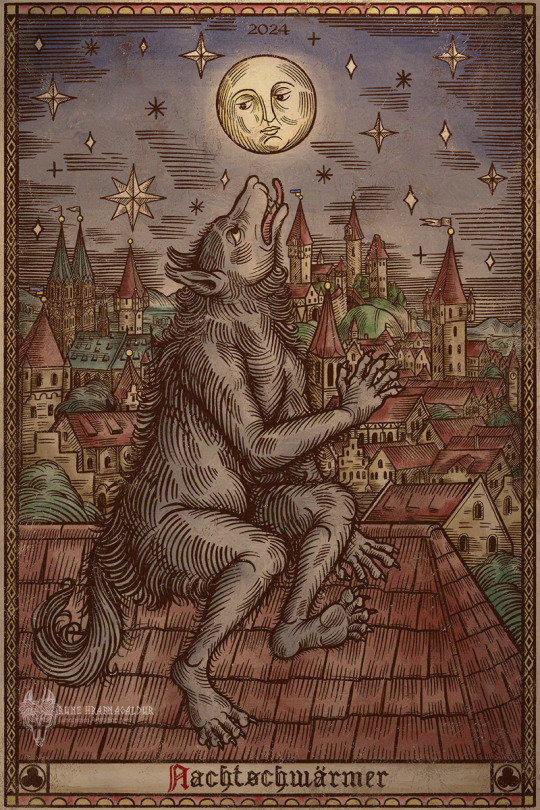

Nachtschwärmer - [night owl/ night person]
New personal piece just in time for the return of the werewolf designs (more details will follow soon] I felt like making coloured version this time as well & I love how it looks! #WerewolfWednesday
#art#werewolf wednesday#werewolf#werewolves#digtial art#lunegrimmart#artists on tumblr#medieval#medievalart#creature#digital art#digital illustration#illustration#illustrator#woodcut#history#historic art#lycanthrope#lycan art#moon#full moon#manuscript#middle ages#beasitary#werewolf transformation#spookyseason#halloween#beast#city#medieval town
12K notes
·
View notes
Text

13.06.2024
The drive to Zaragoza was beautiful, albeit very exhausting. And the fire alarm at 5 am going off in the hotel was something I could do without.
“If they are truly my enemies, then why do I want to weep?” Light Bringer - Pierce Brown
#165of366
1 note
·
View note
Text

Stadhuis van Middelburg, Netherlands 01.2025
#mine#photography#fujifilm xt30ii#fujifilm#netherlands#europe#city photography#street photography#photographers on tumblr#places#gothic#gothic architecture#architecture#aesthetic#gothic aesthetic#travel#dark academia#dark aesthetic#academia#medieval#history#city#urban#buildings#goth#winter
1K notes
·
View notes
Text

Rothenburg ob der Tauber by August Eduard Schliecker
#august eduard schliecker#art#rothenburg ob der tauber#medieval#town#german#germany#ansbach#mittelfranken#middle franconia#franconia#bavaria#bavarian#europe#european#landscape#buildings#architecture#city#old town
539 notes
·
View notes
Text

St. Olave's Churchyard, York, England.
#Churchyard#Church#City#Cities#Taphophilia#Headstones#Gravestones#Graves#Medieval#Architecture#Goth#Gothic#Gothcore#Goblincore#Aesthetic#Wanderlust#Explore#Landscape#Scenic#Scenery#Places#Travel#Nature#Photography
319 notes
·
View notes
Text




Schwäbisch Hall, Germany 1900/10
#comburg#schwäbisch hall#1900s#1910s#germany#history#vintage#photography#deutschland#architecture#places#wanderer#monastery#cityscape#panorama#city gate#medieval#people#tower
242 notes
·
View notes
Text





biblical & historical cities
miniatures from a manuscript of the sächsische weltchronik (saxon world chronicle), northern germany, early 14th c.
source: Berlin, SBB, Ms. germ. fol. 129
#14th century#sächsische weltchronik#saxon world chronicle#cities#architecture#illuminated manuscript#medieval art
346 notes
·
View notes
Note
Hello, years ago you mentioned that it would be difficult to create a city grid on hilly terrain (like King's Landing). However, if one were to make a grid on rugged terrain, how would they do so?
It can be done, it’s just harder and more expensive.
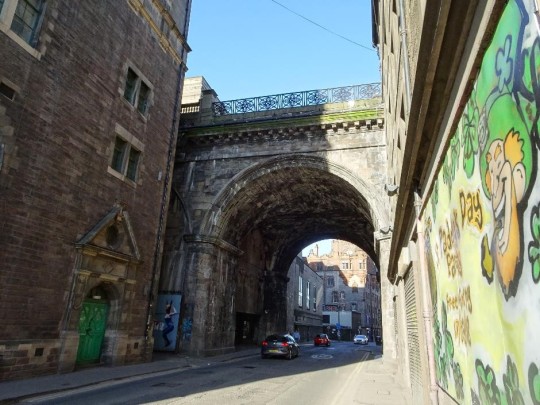
Either you need to level out the terrain by leveling down the peaks and using the dirt to fill in the valleys, or you need to build a lot of streets and buildings on sharp inclines and (if necessary) build lots of stairs (like San Francisco), and/or elevated streets and viaducts (like Edinburgh…or Yharnum), with tunnels to connect areas of lower elevation separated by areas of higher elevation (like Seattle).

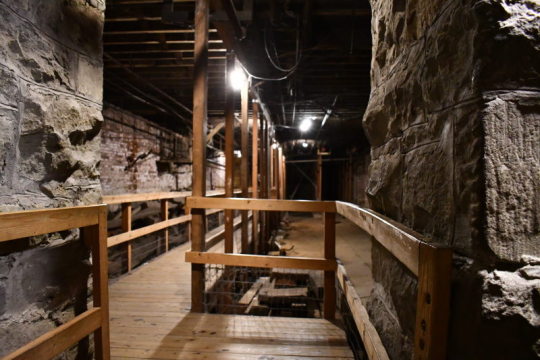
Or do a mix.
#asoiaf#asoiaf meta#medieval cities#city planning#urban geography#urban studies#urbanization#history#historical analysis#civil engineering
44 notes
·
View notes
Text
It's fascinating to me that for our modern (at least on European-influenced societies) thinking, the classical Roman way of life is so familiar. When you read about it, the rethoric of the speeches feels modern, a society based on contracts and laws and litigation, with public works, a state bureucracy and standing army and trade economy and even spectator sports, a concept of philosophy separated from religious dogma and tradition, with even a limited understanding of a government by 'the people' and 'citizenship', even the names all sound familiar even if in completely different contexts, and no wonder since they inspired our current politics.
This all in contrast to medieval feudalism, which is completely alien to me. A society created upon family connections and oaths of fealty and serfdom with no such thing as an overarching state, not even kingdoms were any more real than a title one person holds, and all held together completely, utterly, to an extent I cannot emphasize enough, by the institution of the Church and the Christian faith. In a way we just aren't used today in our secular world. I simply cannot overstate how everything, every single thing, was permeated by faith in the Medieval worldview and the Church which took its power from it, we have an understanding of it but I think people just don't realize it.
#cosas mias#this is a very silly example so bear with me#the other day I was watching some Manor Lords playthroughs#and a guy was complaining his medieval village wasn't growing#it was because no matter all the economic resources it had it didn't have a church#of course that for those people a place without a church is a non-place to start with never mind anything else#(and even the game oversimplifies that)#what I mean by these stupid tags is that we see religion as something private... for them it meant literally EVERYTHING#in a way we don't understand sure we can imagine a city without imagining churches... for someone on the middle ages#a Place was a Place where a Church was
1K notes
·
View notes
Text

I spent forever on this! more medieval elves and some sophiana friendship!
170 notes
·
View notes
Photo

doeeme
#estonia#city#cityscape#urban architecture#medieval city#travel#travelblr#travel photography#travelcore#roamtheplanet#beautifuldestinations#cozy corner#instagram#yuploads
3K notes
·
View notes
Text


#WerewolfWednesday 🌕
These two were insanely popular as tapestry designs & even the extras were gone within hours! I still get messages about them at least once a week so I'm currently doing a re-run of them!
Opened a form now to see if enough out there are interested 👀
I will leave it open for ~3 weeks now. Updates will follow depending on if/when the goal has been reached!
#art#lunegrimmart#artists on tumblr#medieval#fantasy#medievalart#digitalart#digital art#creature#werewolf wednesday#werewolves#werewolf#werewolf by night#middle ages#larp#historic#historic art#wolf#snarling wolf#wolves#lycanthrope#art print#artwork#illustration#illustrators on tumblr#woodcut#lineart#horror#city#medieval town
227 notes
·
View notes
